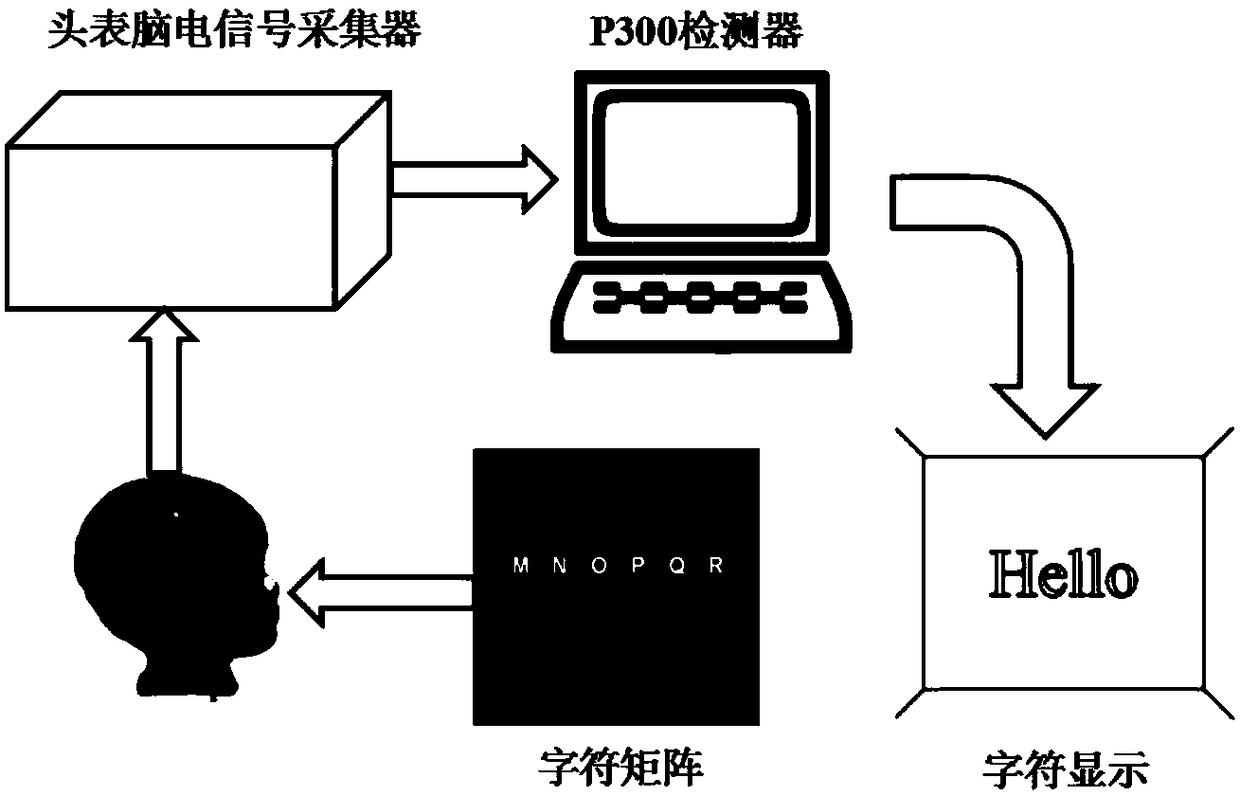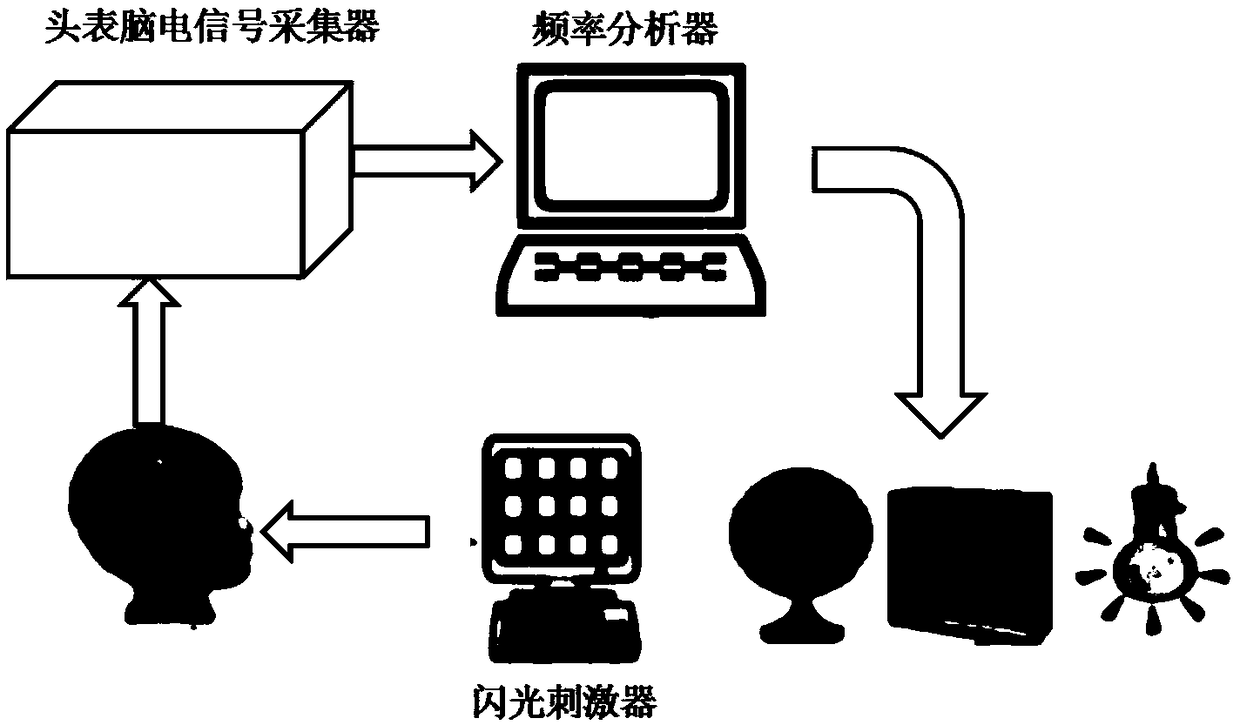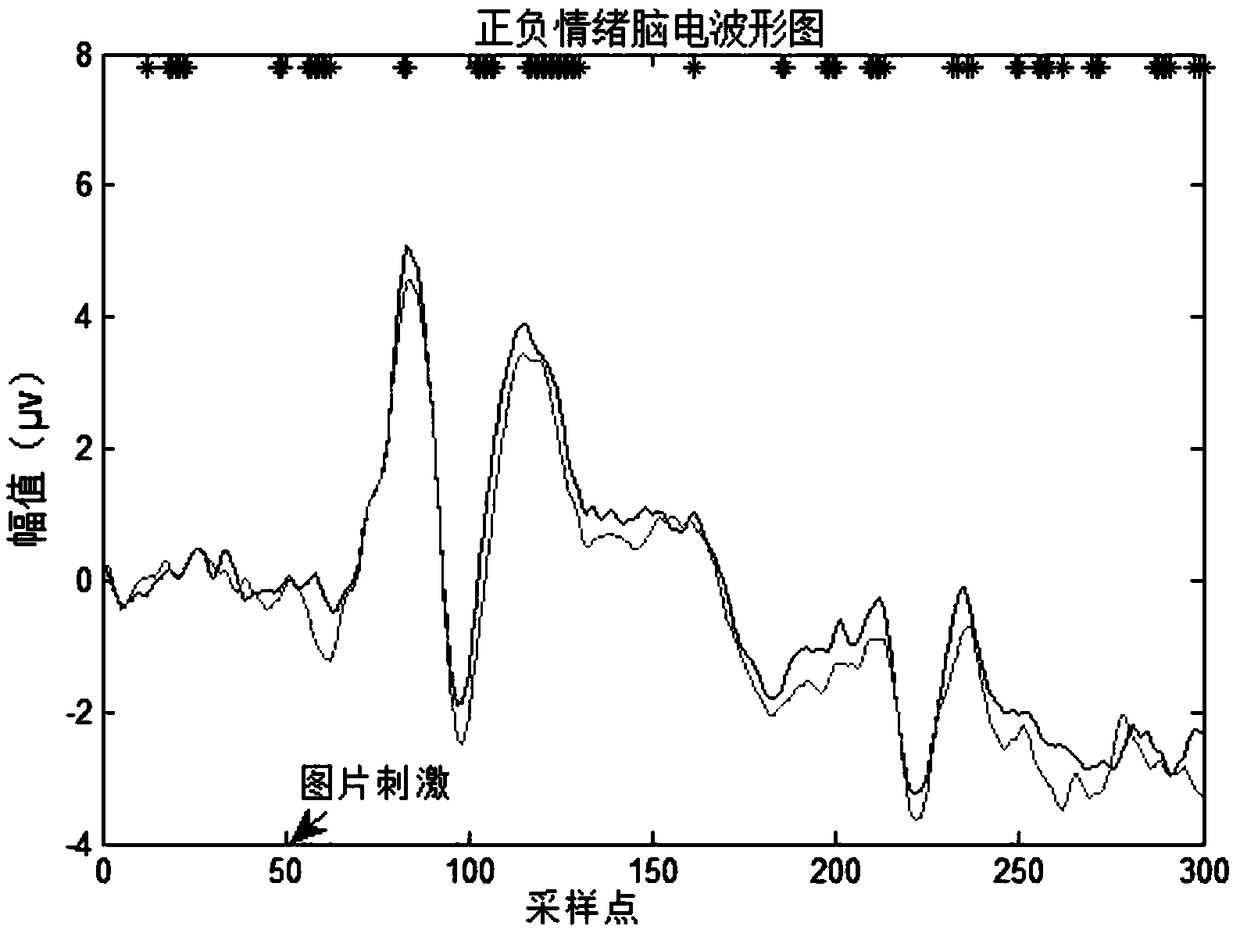Emotional brain-computer interface system based on N170 component of face recognition electroencephalogram
A face recognition and brain-computer interface technology, applied in the field of brain-computer interaction, can solve problems such as long-distance, and achieve fast speed, high recognition effect, and high brain-computer interface effect
- Summary
- Abstract
- Description
- Claims
- Application Information
AI Technical Summary
Problems solved by technology
Method used
Image
Examples
Embodiment Construction
[0039] The preferred embodiments of the present invention will be described in detail below with reference to the accompanying drawings.
[0040] The present invention is based on emotion-based face recognition specific waves, and the EEG specific components mentioned here are N170 cognitive components. A large number of studies in cognitive neuroscience and electrophysiology have found that when people are stimulated by a picture of a human face, as long as the human cognitive system is intact, it is possible to record specific brain patterns on the human occipital scalp. electrical component. This component appears about 170 milliseconds after the person sees the face stimulus, and it appears as a negative peak with a large amplitude, and its peak value is significantly larger than the object picture stimulus. This subwave component is called the N170 component in the EEG, and N means Negtive, 170 means that the peak of negative wave appears around 170 milliseconds after st...
PUM
 Login to View More
Login to View More Abstract
Description
Claims
Application Information
 Login to View More
Login to View More - R&D
- Intellectual Property
- Life Sciences
- Materials
- Tech Scout
- Unparalleled Data Quality
- Higher Quality Content
- 60% Fewer Hallucinations
Browse by: Latest US Patents, China's latest patents, Technical Efficacy Thesaurus, Application Domain, Technology Topic, Popular Technical Reports.
© 2025 PatSnap. All rights reserved.Legal|Privacy policy|Modern Slavery Act Transparency Statement|Sitemap|About US| Contact US: help@patsnap.com



